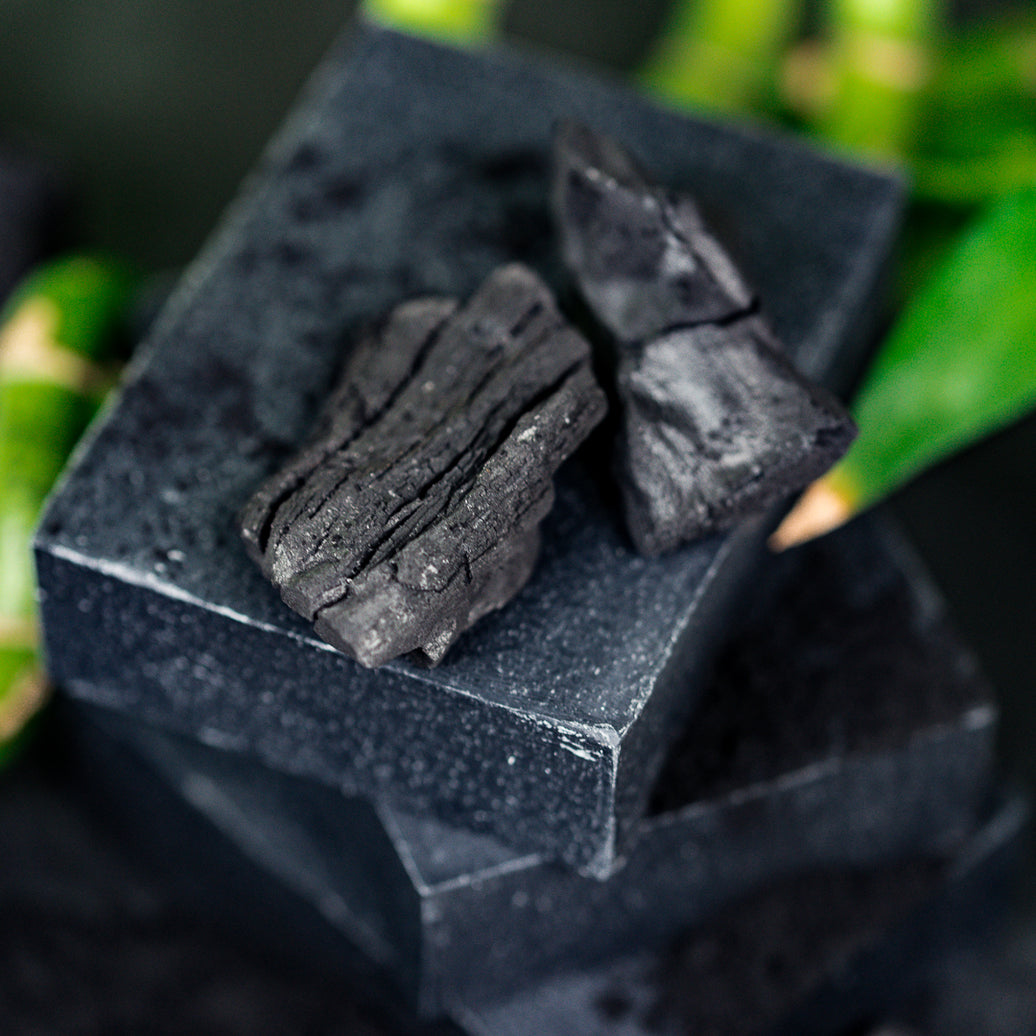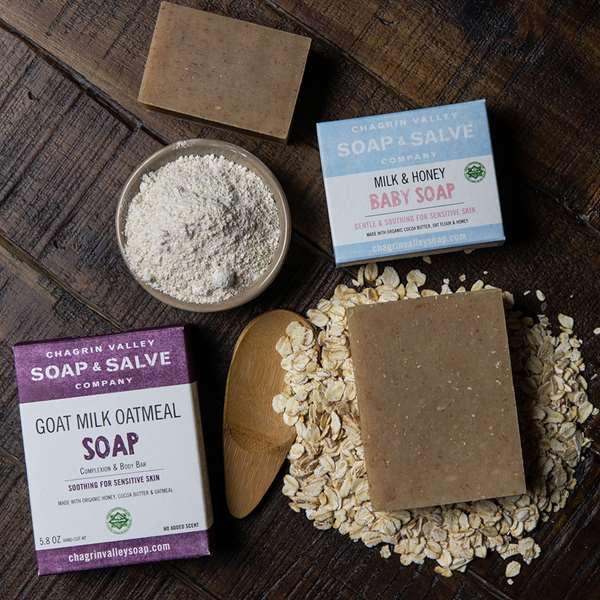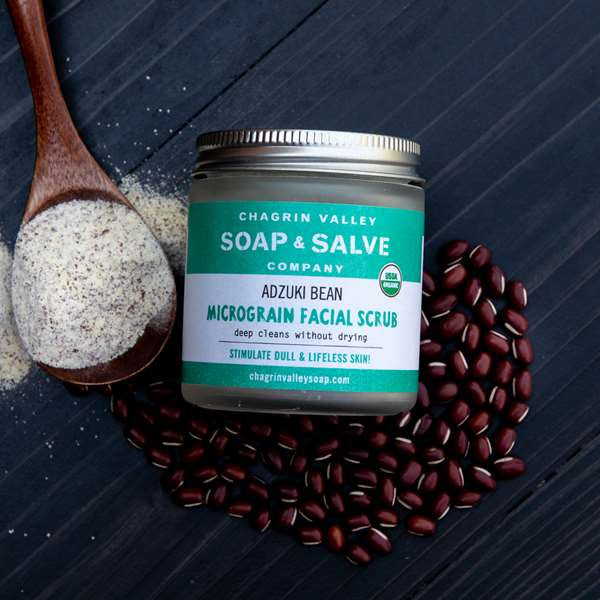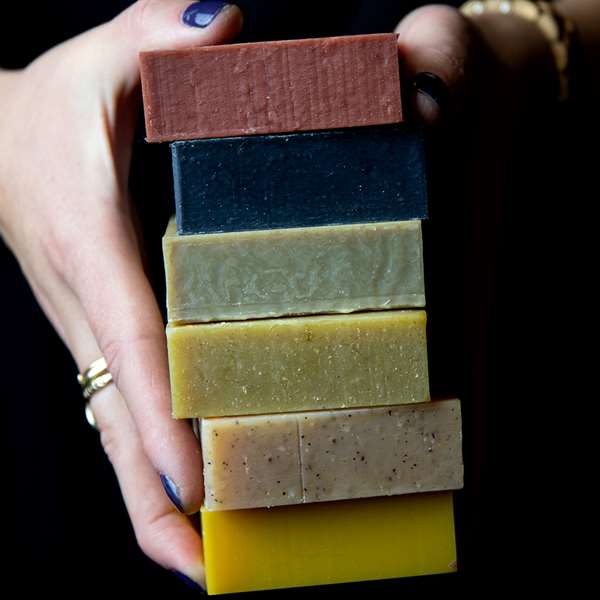
Natural Soap: Bamboo Charcoal
- Out Of Stock
Exfoliation is considered one of the most important things that you do to achieve healthy, radiant skin.
 On average we generate a new layer of skin every two to four weeks.
On average we generate a new layer of skin every two to four weeks.
As we age there is a gradual decrease in the rate at which the old dead cells leave the surface of our skin.
These dead skin cells accumulate on the skin surface and are responsible for the appearance of dull, lifeless skin. Although soap will remove dirt and excess oil, soap alone cannot remove all of the excess dead cells.
Exfoliating removes dead skin cells, deep cleans the skin, unclogs pores, removes dirt and makeup residue, helps reduce acne breakouts, encourages new cell growth and stimulates blood flow to the skin’s surface for a fresh, healthy glow. Exfoliation will allow your moisturizers to penetrate deeper and improve the moisture level of your skin.
There are different methods for exfoliation. Your skin type should determine which method you use and how often you exfoliate. For certain skin conditions, including rosacea, exfoliation is not usually recommended. If you have a chronic skin condition please always consult your health care provider.
Most importantly LOOK at your skin and LISTEN to your skin!

Knowing when to exfoliate is crucial so you don't dry out your face or irritate your skin.
How often you need to exfoliate depends on your skin type, but one or two times a week seems to be the standard for most.
Remember the purpose of exfoliating is to remove excess dead skin cells. You do not want to scrub so hard that you are removing healthy cells, which will leave your skin red and sore.
Oily skin: exfoliate once or twice a week
Dry skin: exfoliate once a week
Mature skin: exfoliate once a week
You may be wondering, "How Do I Know If I Need To Exfoliate?" Here is a simple test you can do yourself to see if you have dead dry skin cells on the surface of your skin.
 Although many experts advise that the best time to exfoliate your skin is when you wake up in the morning, there is no one true solution that fits everybody.
Although many experts advise that the best time to exfoliate your skin is when you wake up in the morning, there is no one true solution that fits everybody.
Since your skin repairs and renews itself overnight, you wake up with new dead skin cells on the skin's surface.
Exfoliating in the morning helps slough away dead skin.
For more comprehensive info on Exfoliation, read our blog, "The Nitty Gritty of Exfoliation"
 Rub your exfoliating product firmly but gently on wet skin in a circular motion.
Rub your exfoliating product firmly but gently on wet skin in a circular motion.
Sensitive facial skin should be scrubbed gently, while the skin on your torso can be scrubbed a bit harder.
The very sensitive area around the eyes does not need and should not be exfoliated. Since skin oils tend to hold on to dead skin cells, people with oily skin may need to exfoliate more often.
It's a good idea to remove any makeup and cleanse your skin before exfoliating in order to get a good deep clean.
If you have acne-prone or very oily skin you may think you need to exfoliate often. But, washing your face too much and over-exfoliating will dry out the skin.
 The sebaceous glands react to this excess dryness by producing even more oil which ultimately causes more breakouts to occur. So, we suggest exfoliating once or twice a week.
The sebaceous glands react to this excess dryness by producing even more oil which ultimately causes more breakouts to occur. So, we suggest exfoliating once or twice a week.
Exfoliation for those with dry skin is very important, especially in winter. When our skin feels dry we too often slather on heavy creams to compensate for the dryness.
But dry skin flaky skin means that you have a build-up of dead, dry skin cells. Why would you want to moisturize dry, dead skin cells? What you really want to do is exfoliate those dead skin cells away and then moisturize the skin. Without regular exfoliation, dry skin can become flaky and look dull.
Dry skin as well as sensitive skin does not need harsh scrubs or aggressive products for glowing skin.
A great product for dry facial skin in need of exfoliation is our gentle Adzuki Bean Scrub.
 You may not realize it, but simple exfoliation occurs every time you wash your face, from the friction of gently rubbing your skin with a washcloth or even your hands.
You may not realize it, but simple exfoliation occurs every time you wash your face, from the friction of gently rubbing your skin with a washcloth or even your hands.
We have natural soaps that we call "exfoliating" soaps, but we also have many soaps that contain ingredients that provide gentle exfoliation.
Rubbing a simple soap bar that contains crushed or powdered botanicals or even clays can help remove dead skin cells.
Depending on the type of exfoliation used, a bit of moisturizer is probably needed. Remember, moisturizers hydrate best when dead cells have just been scrubbed away.
If you are sure whether or not you to exfoliate, try the tape test mentioned above. Look the surface of your skin. Do you see clogged pores, dryness or roughness?
Facial skin should be treated delicately, using very little pressure and small textured granules. Since facial skin may already be inflamed due to acne breakouts, NEVER use harsh facial scrubs on blemished skin, and NEVER use any facial scrub aggressively on blemished skin. Simple exfoliation occurs every time you wash your face from the friction of rubbing your skin with your hands, washcloth, or gentle facial pad.
For more detailed information on the types of exfoliation please read our blog, The Nitty Gritty of Exfoliation.
Exfoliating microbeads were recently banned from from rinse-off cosmetics by mid-2017. Microbeads are made of plastic, do not biodegrade and are polluting the oceans, groundwater, waterways and aquatic life. There are still products out there that contain these plastic spheres--so beware!
Avoid using scrubs that contain pulverized nutshells and fruit pits, like apricot kernels, which often have sharp edges that can tear delicate skin which can lead to skin irritation and inflammation.
Harsh acid scrubs will irritate already sensitive skin. Salts scrubs are best left for the body since they are a too harsh and drying for the face.

Our face has different zones in which the skin can vary in thickness, texture, pore size and the number of oil-producing glands.
Each zone may have very different needs and require individual attention.
So, what happens if you have multiple facial skin issues, like dryness, oily spots, and blemishes?
The answer is Multi-Masking . . .
Multi-masking is exactly what it sounds like. Instead of applying one face mask over your entire face, you apply different masks to different areas of the face in order to treat multiple skincare concerns at the same time.
For more information please read our blog Multi-Masking and Targeted Application For Combination Facial Skin
People with severe allergies—please note: If you have severe anaphylactic-type reactions to ANY of the ingredients in ANY of our products, please do not buy our products. We have dedicated soap rooms and product rooms that are kept meticulously clean, but we cannot guarantee against possible cross-contamination of individual ingredients.
Chagrin Valley Soap & Craft is not responsible for any individual reaction to any particular ingredient. Each product description on our website includes a complete list of ingredients. People with sensitivities to any listed ingredient should not use the product. In case you are in doubt always try an allergy patch test and if at any time irritation occurs, discontinue use of the product.
The content and information on this website, provided by The Chagrin Valley Soap & Salve Company, is for educational purposes only and is in no way intended and should not be construed as medical advice to diagnose, treat, cure, or prevent any disease or health condition. The information regarding folklore or health-related benefits of certain ingredients is for educational purposes only. The information provided is not intended to prescribe or be taken as medical advice.
The information provided is not meant to substitute the advice provided by your personal physician or other medical professionals. Do not use the information found on this website to self-diagnose any medical conditions or treat any health problems or diseases. If you have medical concerns regarding yourself or your family you should seek the advice of qualified, licensed health professionals. Never disregard professional medical advice or delay in seeking it because of something you have read on this website.
This information has not been evaluated by the Food and Drug Administration. This notice is required by the Federal Food, Drug and Cosmetic Act.
Read our Full Medical Disclaimer.